Innovation Spotlight, Sustainability
Flatiron Innovates Exclusion Devices to Save Bats and Birds at U.S. Highway 50 job in Sacramento
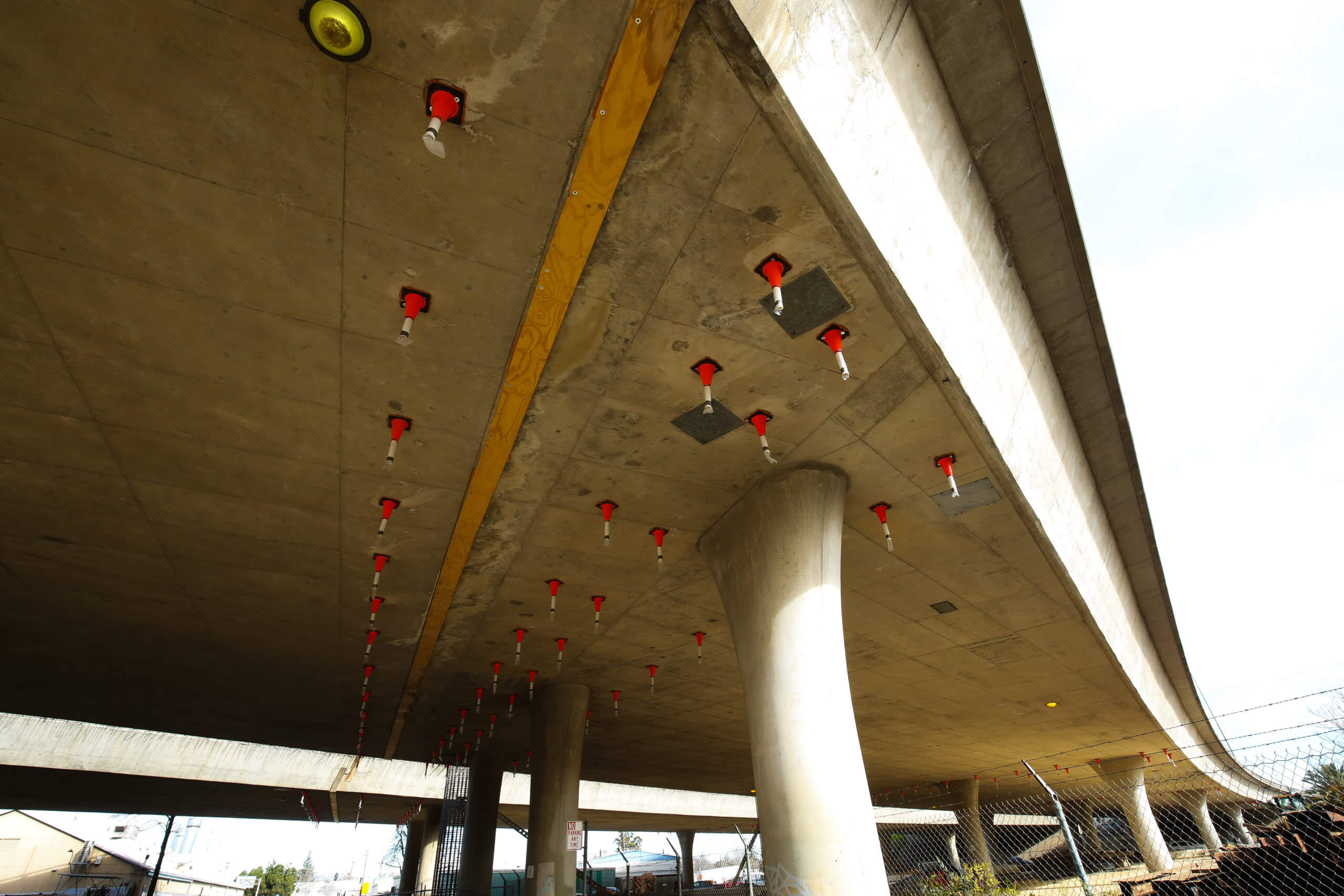
An innovative solution designed to protect the environment and minimize construction disturbance and impact.
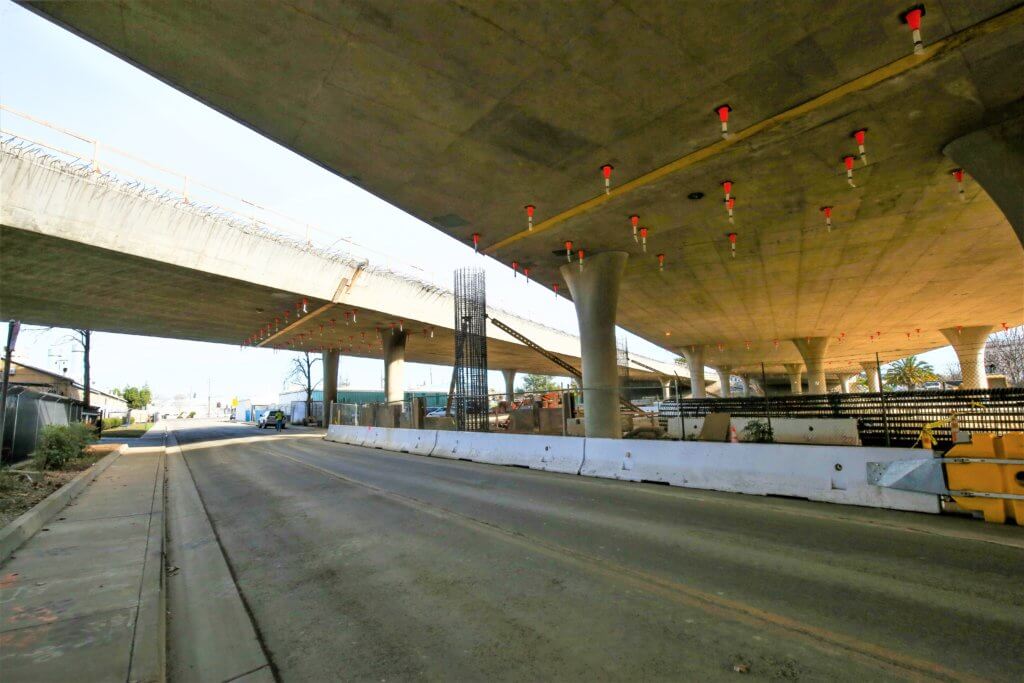
Have you ever paid attention to the structural design underneath highway bridges? Residents in Sacramento, California did when they drove past Flatiron’s U.S. Highway 50 jobsites, where they raised the question: “Why are there upside-down orange traffic cones under the Sacramento freeway bridges?”
It turns out that those are innovative measures implemented by the Flatiron project team to save bats and birds.
The Project
Flatiron is the contractor for Caltrans’ U.S. 50 Multimodal Enhancement and Rehabilitation Project in Sacramento, California. This $460 million comprehensive corridor project will add seven miles of new carpool lanes in each direction—plus widen 12 bridges—to complete the carpool system.
During the preconstruction activities, the project team found bat and bird nests under the bridge structures at job locations. In order to protect the bat and bird species from potential construction impacts, the Flatiron team worked with biologists and environmental specialists to conduct surveys and studies. With an understanding of these species and their behavior patterns, the team developed a Bat & Bird Exclusion Plan to safely exclude the bats and birds and to prevent them from nesting in bridge structures throughout the duration of the project.
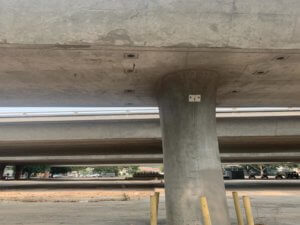
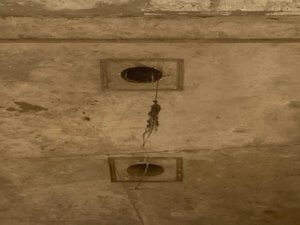
(Photos showing weep holes under bridge structures that require exclusion devices to prevent bat and bird nesting.)
The Innovative Solution
“During the preconstruction studies, we confirmed that the bats like to crawl into bridge joints, hinges, crevices and especially weep holes—where moisture can drain out of the roadway—to build nests hidden inside the structure,” said Nic Cooper, Flatiron Field Engineer, who’s known as the “bird expert” on the team. “If the birds or bats are disturbed by construction activities, the mother birds and bats may leave their nests and abandon the young ones,” Nic added. “We wanted to protect the bats and birds and minimize project interruption.”
So, Nic and the project team used a solution they had implemented at a previous job with the help of Melissa Murphy, a biologist then with Gallaway Enterprises. It’s a “One-Way Exit Device” that meets requirements of both Caltrans and environmental agencies.
The device—also known as “Bat and Bird Exclusion Device”—is mainly made of a light-duty traffic cone, whose top is clamped to a plastic tube covered with a soft sleeve. The device allows bats and birds fly out, but not fly back in. The device also allows water to drain out of the cones, preserving the function of the weep holes while they’re covered. Once construction is complete, the devices can be easily removed.
“There are similar home-use bat exclusion devices on the market, but they’re quite expensive and don’t meet our project need here,” said Nic. “So we made our own cost-effective version that works best for us.”
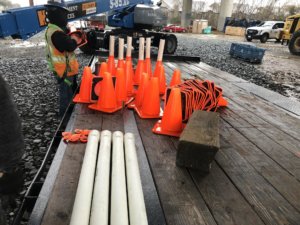
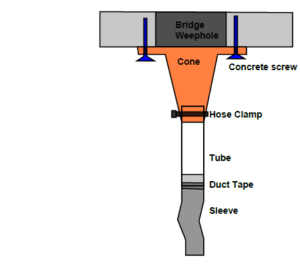
(Left: More than 1000 one-way exit devices were handmade by Flatiron crews. Right: Anatomy of a “One-Way Exit Device” designed for the project.)
The Implementation
In fall 2020, prior to the initiation of construction activities, these one-way exit devices and other exclusion techniques were installed at identified job locations following schedules set by biologists with the involvement of environmental specialists. Regular inspection and monitoring activities at all exclusion device bridge locations were conducted by biologists to ensure exclusion success. To further minimize impact to any potential bat and bird population, precaution policies were also established. For example, if a location becomes occupied by bats where no exclusion devices have been installed, a 50-foot “buffer zone” will be established and the project biologists will be able to halt construction work in the area to implement protective measures.
Moreover, whenever needed, the team adjusts the practices as the project continues. For example, shortly after the installation of the exclusion devices, the Flatiron team was informed of the potential opportunity to save the only sizable breeding population of Purple Martin bird species in California’s Central Valley. They learned that these Purple Martins usually only nest under a few of the U.S. Highway 50 bridges during breeding season and the species is a California “Species of Special Concern.” So the team coordinated the removal of a specific range of exclusion devices just prior to nesting season to allow the Purple Martins to nest and repopulate—helping maintain the Purple Martin population in California.
The Results and Flatiron’s Sustainability Commitment
“With our bridge work at the U.S. Highway 50 project well-underway, we’re pleased to have seen the innovative measures taking effect,” said Robert Ferrouge, U.S. Highway 50 Project Manager at Flatiron. “The measures helped mitigate project risks and improved safety for our people, the communities we serve and the environment we seek to protect—including the lives species that consider the area home.”
As a leader in heavy civil construction, Flatiron is committed to positioning sustainability at the forefront of construction priorities. And we’re glad to have had the opportunity to implement these strategies as part of our everyday work at the U.S. Highway 50 Project.
Read more about the U.S. Highway 50 Project
